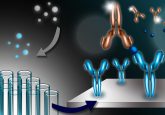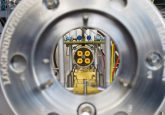The baseline-disturbing adventures of the ghost-peak busters in mass spook-trometry and beyond

In this column from Robert MacNeill (Labcorp Drug Development, NJ, USA), he explores the challenges of LC-MS batch sequence analysis and peak manifestation that occurs during tandem quadrupole MS.
Robert MacNeill received his Bachelor’s degree with Honors in Chemistry from Heriot Watt University then his MSc in Analytical Chemistry from the University of Huddersfield, both in the United Kingdom. Robert is also a Chartered Chemist and a Fellow of the Royal Society of Chemistry. With 22 years of experience in all aspects of quantitative bioanalytical LC–MS/MS method development, 13 of these years heading method development activities within the Princeton site that has housed HLS/Envigo/Covance (now Labcorp Drug Development), and a regular author and peer reviewer for the journal Bioanalysis, Robert is a recognized expert and innovator in the field.
In the howling wind of the darkest moments of the night, the frostbitten landscape shuddered under the faintest of moonlight. This chill and unforgiving dominion seemed an eternity away from any hint of human warmth, but at the same time deathly close where, in the far distance below, nestled at the foot of the humbling precipitous mountains, glimmered a flickering light in a tiny window.
“Is this where I’m supposed to be for my CE-MS seminar?” wondered the Snow beast. “I need to branch out from my simple ghoul-ometry.”
Welcome to a modest Halloween-themed column. How often have we considered hiring an exorcist for a persistently malfunctioning mass spook-trometer? Has your high-throughput screening ever become high-throughput screaming? I’ll try to maintain a GLP context, though, and that means – of course – ghosts, leprechauns and pumpkins.
Things can go ‘bump’ in the night, certainly during an LC-MS batch sequence analysis. This naturally includes chromatograms and their ‘bumps,’ baseline disturbances. What can they be? In the same inviting vein, if we’re really going to get our teeth into this, what about weird chromatographic manifestations that are clear peaks, just not where they should be in terms of retention time or monitored ion channel? Are they different in nature? Should they all just be shut away with plenty of garlic and holy water, preferably blessed by reverse osmosis, and with no access to visions of the full moon?
Well, it can be down to the spectral nature of the detection. By that, I don’t mean anything to do with ghostly mass spectrometers from beyond the grave, although the real things can be hair-raising if mistreated in particular ways. I refer to just the nature of the scanning or monitoring. Also, the unearthly peaks and bumps may be an artifact of non-ideal column performance, or something awry with the front-end unit, like unwanted voids having been created. Not the void of deepest, darkest outer space, just system voids. These, particularly at the head of the column or in the injector port plumbing, may lead to these horrors of contamination. Additionally, and perhaps less commonly, it can be down to a sinister aspect of the sample’s own composition. For example, too much organic in the injected sample in a reversed-phase method can give rise to a convenient un-dead time marker.
To turn our horrific gaze to the monitoring aspect, firstly one must accept the cold reality that if there are isobaric compounds being monitored, such as with isomeric compounds, or if there are interferences that are isobaric with anything being monitored, then we’ll be doomed to be spooked by ghost peaks. Overwhelmingly so, for the interferences, if tandem MS or high-resolution MS is not being used. We’ll be able to put our shaking fingers to good use in altering the selectivity of the extraction, however, and ensuring baseline separation in the chromatography for the isomers.
Perhaps the classic, most harrowing, seethingly angry-sounding ghost peak manifestation comes through tandem quadrupole MS, the phenomenon of crosstalk. It would certainly make the mad mass spectrometrist cross. A product ion within a set of monitored transitions is the same as for another transition. Not the transition to the other side, I hear you ask through the ether, but a transition from precursor ion to product ion upon fragmentation in a pressurized collision cell. Like trying to fully purge the evil from Dracula, it’s quite hard to fully eliminate product ion content from the collision cell on the millisecond scale. When the subsequent transition is dwelled on, even though the precursor is different, the small abundance of the same product is picked up if it’s monitored in the method. It’s most clear if the sample injected is supposedly blank for that analyte showing the chromatographic wraith. Modern triple quads are equipped in various ways to address the possibility, and there are safeguards one can take such as including dummy transitions, but it does …mysteriously… still happen!
That just about covers it for my advice about supernatural aspects of bioanalysis, and you’ll be pleased that I haven’t even delved into ion-scaring reagents for howl-igonucleotides by LC-MS or dwelled at all on gauging carbon skeletons for initial stages of method development! In any case, if you see anything else peak-uliar, please let me know! I will be all too eager to pick your brains, perhaps even closely inspect, analyze them with a suitably spirited method and, as always, letting the vampirical data speak.
Disclaimer: the opinions expressed are solely my own and do not express the views or opinions of my employer.






